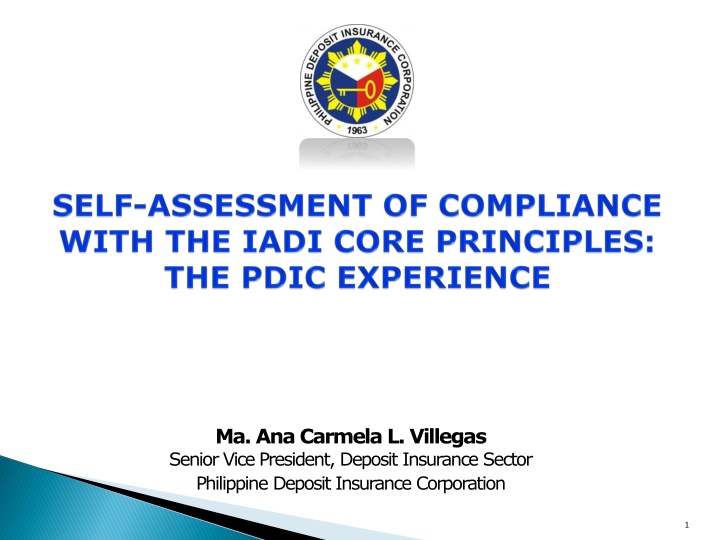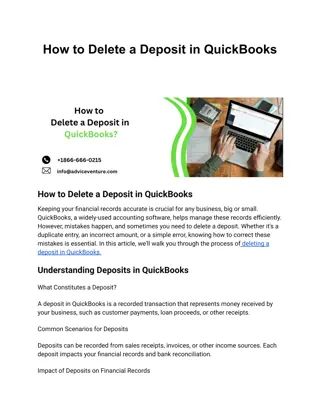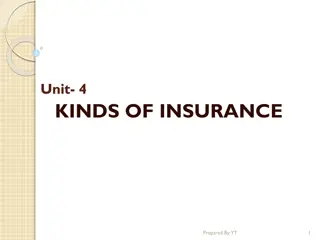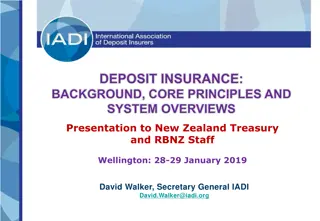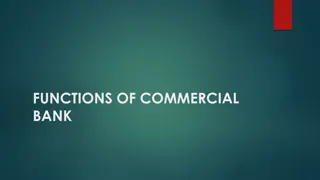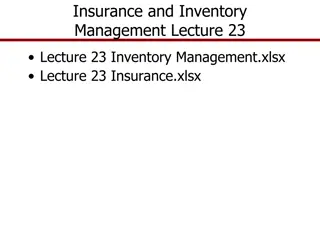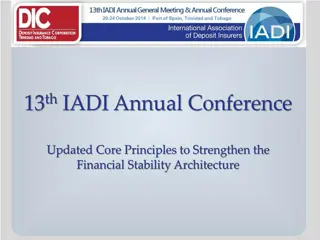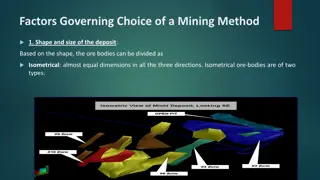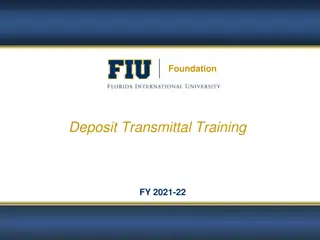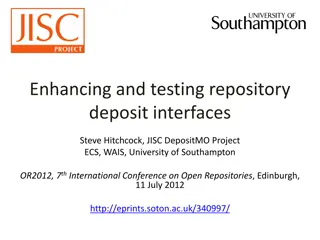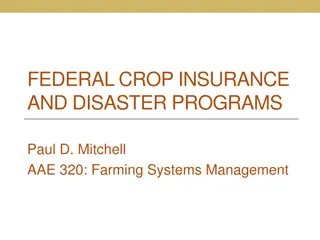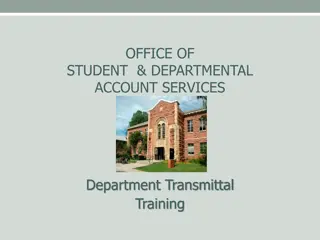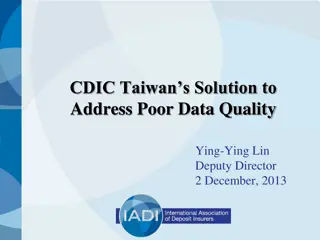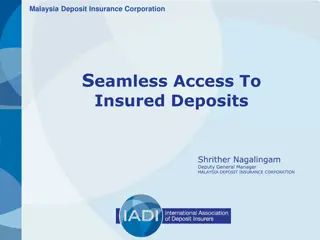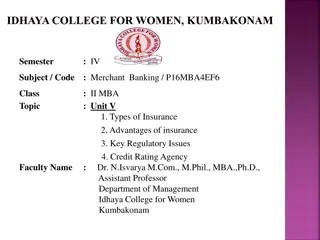PDIC Self-Assessment Process for Effective Deposit Insurance System
Evaluation of adherence to core principles, identification of legal, policy, and program gaps, and informing key stakeholders through a structured self-assessment process led by Ma. Ana Carmela L. Villegas, Senior Vice President of the Deposit Insurance Sector at the Philippine Deposit Insurance Corporation. Activities include forming an Internal Assessment Team, creating a secretariat for support, and studying IADI assessment methodology for enhanced compliance with Core Principles.
Download Presentation

Please find below an Image/Link to download the presentation.
The content on the website is provided AS IS for your information and personal use only. It may not be sold, licensed, or shared on other websites without obtaining consent from the author.If you encounter any issues during the download, it is possible that the publisher has removed the file from their server.
You are allowed to download the files provided on this website for personal or commercial use, subject to the condition that they are used lawfully. All files are the property of their respective owners.
The content on the website is provided AS IS for your information and personal use only. It may not be sold, licensed, or shared on other websites without obtaining consent from the author.
E N D
Presentation Transcript
Ma. Ana Carmela L. Villegas Senior Vice President, Deposit Insurance Sector Philippine Deposit Insurance Corporation 1
I. Objective of the Self-Assessment II. Preparations for the Self-Assessment III. Conduct of Self-Assessment IV. Post Self-Assessment Activities V. Lessons and Challenges 2
To evaluate adherence to the Core Principles and in the process, identify legal, policy and program gaps that need to be addressed to have a more effective deposit insurance system 3
Informed the Board of Directors, PDICs governing body Informed the Financial Sector Forum (FSF)* *Bangko Sentral ng Pilipinas (Central Bank), Securities and Exchange Commission (SEC), and Insurance Commission (IC) 4
Creation of an Internal Assessment Team(IAT) Nine (9) members from top management Chaired by an Executive Vice President Main responsibilities: conduct of self- assessment and preparation for external assessment by an IADI team of assessors 5
Formation of a secretariat to provide technical and administrative support to IAT Main responsibilities: gather and compile supporting documents and relevant data and information assist in preparation of preliminary self-assessment write-up for each Core Principle record minutes of meetings and agreements liaise with other safety net players, government agencies 6
Study and understanding of IADI assessment methodology Review of each Core Principle essential and additional criteria five-grade scale rating system Participation in two IADI assessment workshops Seminar on Assessing Compliance with the Core Principles for Effective Deposit Insurance Systems (September 6-8,2011, Basel, Switzerland) Third Regional Workshop on the Assessment of Compliance with the Core Principles for Effective Deposit Insurance Systems ( March 25- 29,2012,Kuala Lumpur, Malaysia) One IAT member participation as assessor in the Fifth Regional Workshop on the Assessment of Compliance with the Core Principles for Effective Deposit Insurance Systems (November 4- 10, 2012) 7
Formulation of Work Plan and schedule Formation of three sub-groups from the IAT to facilitate work Initial assessment of extent of compliance using the Handbook as a guide Determination of gaps/deficiencies Drafting of assessment write-ups Identification of references, information and data to support assessment of compliance Consultation with other safety net players government agencies and relevant stakeholders Formulation of plans to achieve compliance 8
Each sub-group assigned a set of inter- related Core Principles and had series of discussions to reach consensus on initial rating and write-up to support the rating Sub-group outputs subjected to plenary review of the IAT to arrive at final ratings and write-ups 9
Presentation to the PDIC Executive Committee, Board of Directors and FSF of the output Assessment/ratings for each CP Explanation for the ratings Gaps for CPs where PDIC is not fully compliant Corrective actions in the short and medium term References 10
Notification to the PDIC Board of Directors Creation of self-assessment team (IAT) and its sub-groups, and the Secretariat Consultation with other safety net players and relevant stakeholders Sub-group meetings, discussions, write-ups Plenary review and finalization Presentation to PDIC Executive Committee, Board of Directors and FSF 11
IV. Post Self-Assessment Activities Review of results of self-assessment by an IADI team of assessors Participation in the development of Self- Assessment Technical Assistance Program(SATAP) by sharing PDIC s experience in the conduct of self-assessment in preparation for a third-party review of IADI experts Corrective actions to address gaps in CPs where PDIC is not fully compliant are being pursued. Legislative initiatives currently being discussed in the Senate and House of Representatives 12
Ensure support of the governing body and management Enlist participation of all units/sectors within the organization. Cascade results to employees Encourage free flow of discussions and debates so that everyone has ownership of the final output 13
Consult with external stakeholders (other safety net players, government agencies) and seek consensus on matters requiring mutual decision/action Determine constraints (e.g. resources, manpower) and work within realistic timetable 14
Self-assessment against the essential and additional criteria is complex and requires judgment call Having operated despite issues and gaps in some of the CPs, internal assessors tend to be soft raters 15
SALAMATTHANK YOU 16
